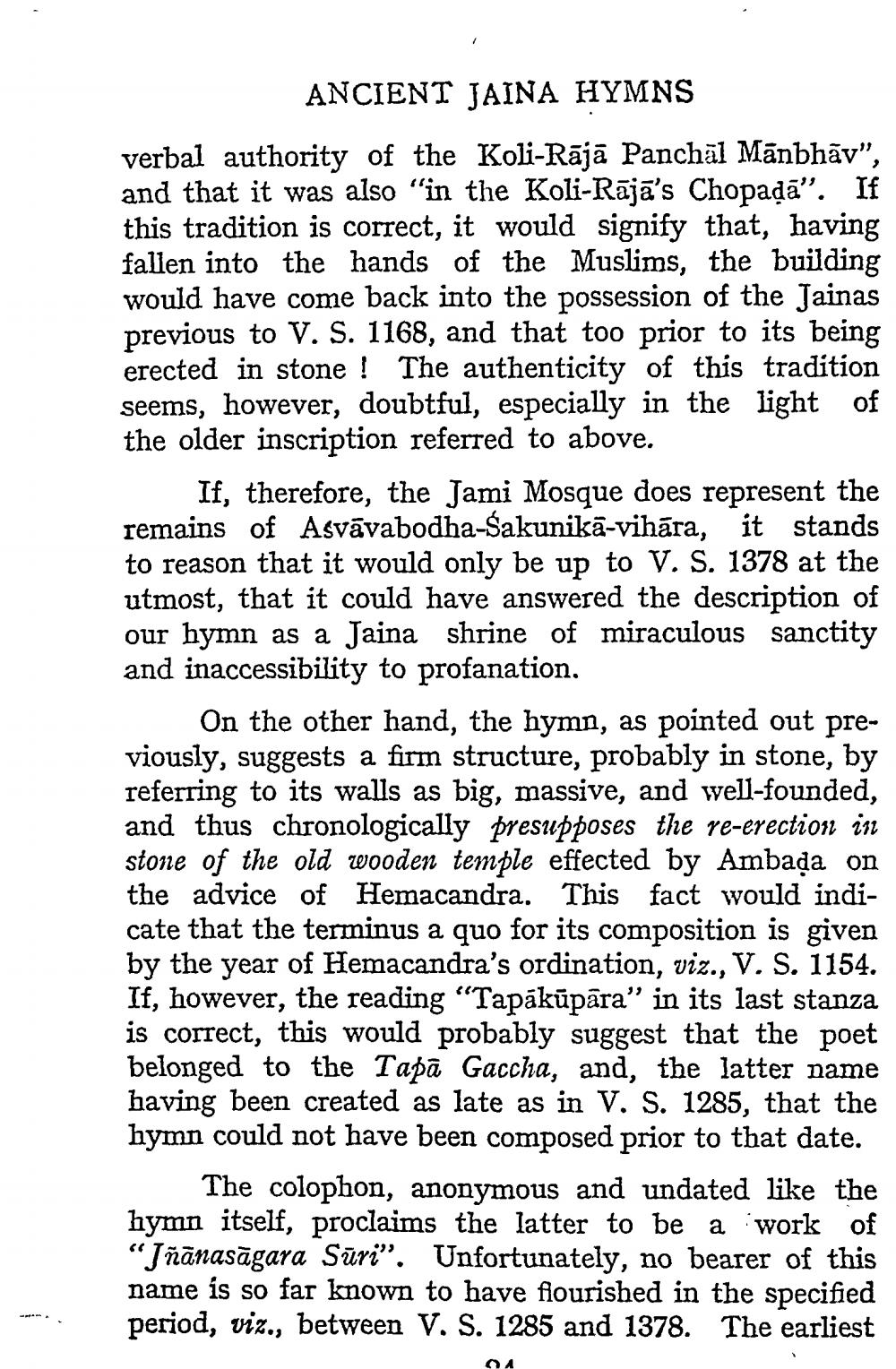________________
ANCIENT JAINA HYMNS
verbal authority of the Koli-Rājā Panchāl Mānbhāv", and that it was also "in the Koli-Rājā's Chopadā”. If this tradition is correct, it would signify that, having fallen into the hands of the Muslims, the building would have come back into the possession of the Jainas previous to V. S. 1168, and that too prior to its being erected in stone! The authenticity of this tradition seems, however, doubtful, especially in the light of the older inscription referred to above.
If. therefore, the Jami Mosque does represent the remains of Asvavabodha-Sakunikā-vihāra, it stands to reason that it would only be up to V. S. 1378 at the utmost, that it could have answered the description of our hymn as a Jaina shrine of miraculous sanctity and inaccessibility to profanation.
On the other hand, the hymn, as pointed out previously, suggests a firm structure, probably in stone, by referring to its walls as big, massive, and well-founded, and thus chronologically presupposes the re-erection is stone of the old wooden temple effected by Ambada on the advice of Hemacandra. This fact would indicate that the terminus a quo for its composition is given by the year of Hemacandra's ordination, viz., V. S. 1154. If, however, the reading "Tapākūpāra" in its last stanza is correct, this would probably suggest that the poet belonged to the Tapā Gaccha, and, the latter name having been created as late as in V. S. 1285, that the hymn could not have been composed prior to that date.
The colophon, anonymous and undated like the hymn itself, proclaims the latter to be a work of "Jñānasāgara Sūri”. Unfortunately, no bearer of this name is so far known to have flourished in the specified period, viz., between V. S. 1285 and 1378. The earliest




